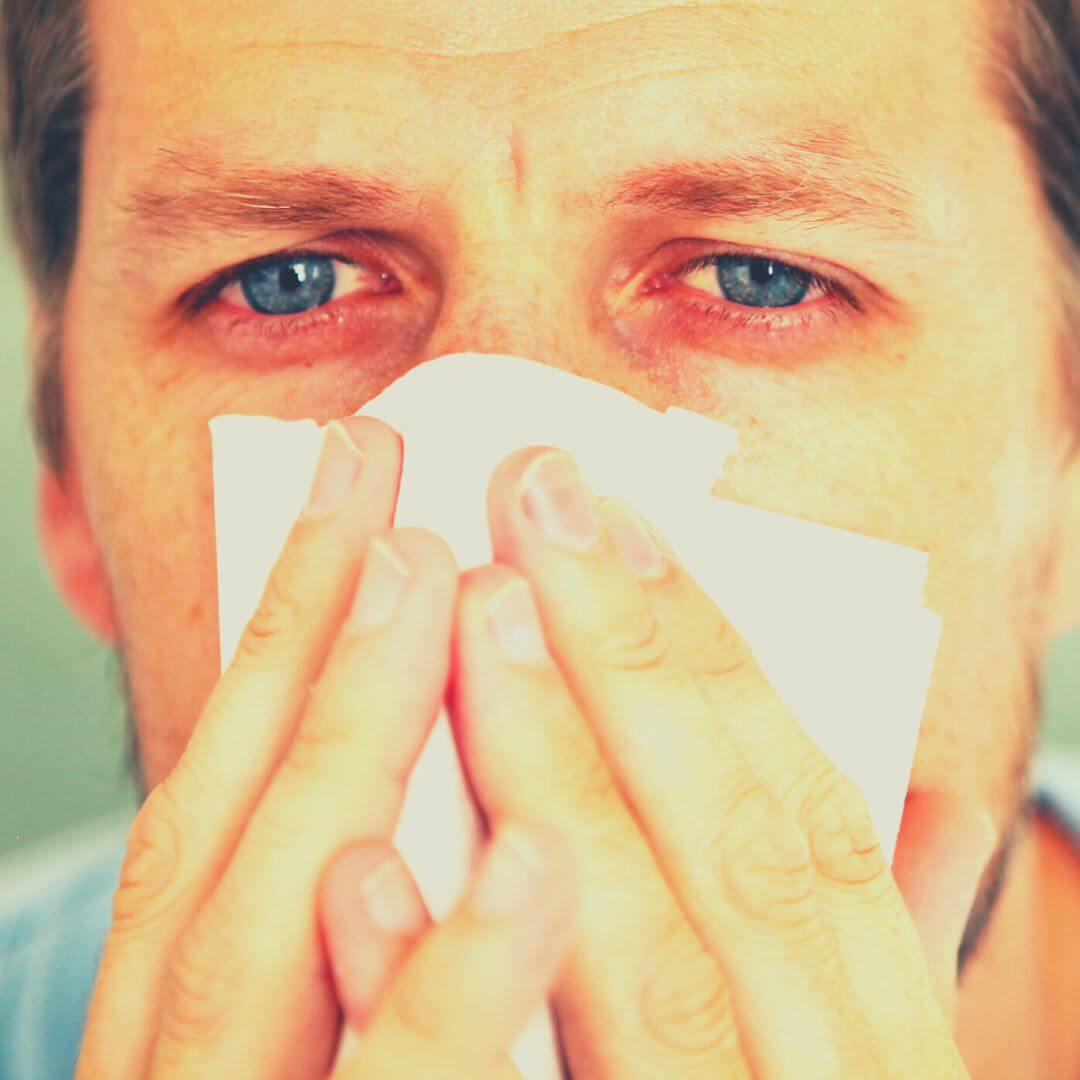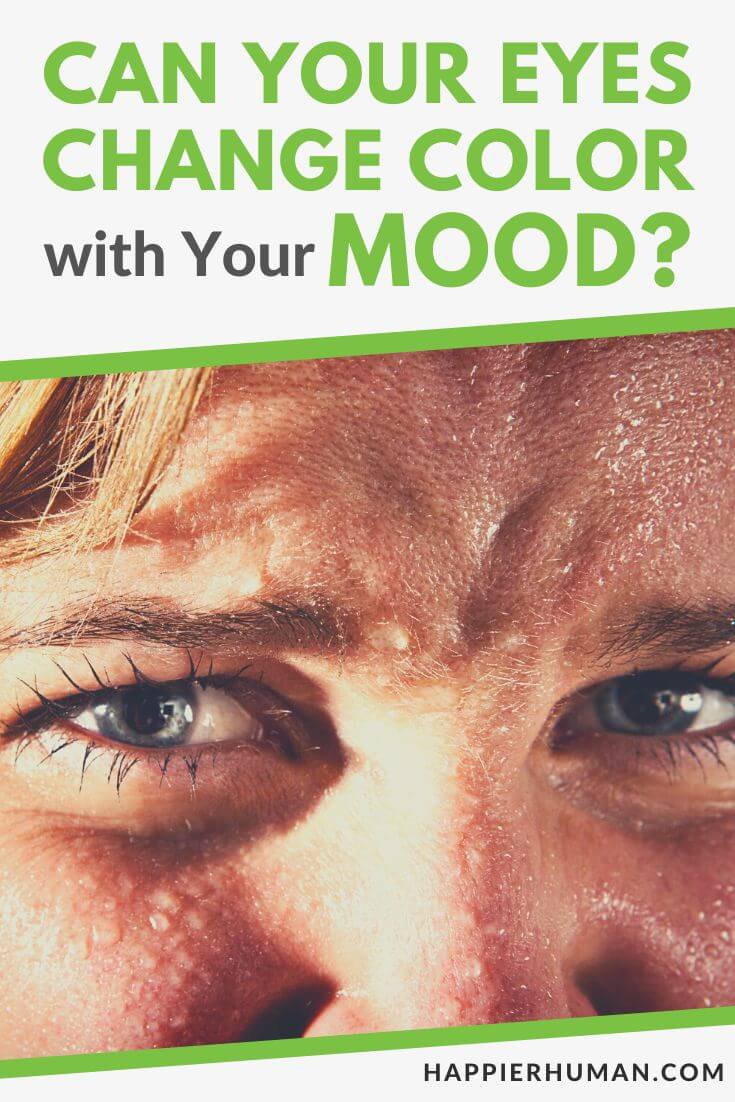Did you have a mood ring while growing up? I had one, and sometimes when I see them in the shops, I itch to have one again. Today, I know that black doesn’t necessarily mean I’m stressed nor does purple mean I feel calm.
I was enamored with my mood ring until I later learned that the thermotropic liquid crystals react to your finger’s body temperature, and thus, the ring changes color and shows your mood.
But what about your eye color? Can eyes change color with mood?
You may have noticed that your eyes are sometimes a different shade of blue, green, or brown. Did you ever wonder if it has sometimes to do with how you feel at that particular moment?
I share everything you need to know about eye color, your mood, and other factors that influence the color of your soul windows.
Can Your Eyes Change Color with Your Mood?
Your eyes cannot completely change color like from blue to green or brown to blue when your mood changes. Instead, the size of your pupil changes when your mood changes, and in turn, the hue of your eyes change.
As you experience happiness, sadness, anger, excitement, and fear, your body releases oxytocin, a hormone that causes your pupils to change in size.
As a result, the pigments in your iris spread apart or compress, giving your eye color a different shade.
Moreover, depending on what you are feeling, your facial expression also changes. A furrowed brow when you are angry can make your eyes squinty, so a smaller amount of light is let in. Your iris, which is a muscle, expands and contracts to control your pupil’s size. The pupil then expands, and your eyes may appear darker in color.

Also, if your eyes have red, dilated blood vessels because you are so angry, your eyes may appear bluer or greener because of the contrast.
When you are in love or ecstatic, your eyes open wider, and more light is let in. The result is that your iris again controls your pupil’s size. When you open your eyes wider, your pupil contracts, and your eyes appear brighter in color. A person can see more of your irises (aka your eye color) the smaller your pupil.
If your eyes are tearing because you are sad, your eye color will also slightly alter in tone.
However, once your emotions return to “normal,” the color of your eyes will return to their normal color.
6 Other Reasons Why Your Eyes Can Change Color
Your mood isn’t the only reason why your eye color may “change.” Other influencers are:
1. Age
Most babies are born with a “neutral” eye color – it’s usually gray or light blue. And then as the child gets older, their eye color darkens (because melanin levels increase) and settles into their true color.
For some people and for unknown reasons, their melanin levels continue to increase throughout their life. So, as they age, their eye color continues to darken.
A small portion of Caucasians experience a decrease in melanin levels, resulting in a lighter eye color as they age.
2. Exposure to the Sun
The more sun exposure you get, the more melanin is produced by your body. And your eye color can darken as a result.
3. Food
They say you are what you eat, and I guess that’s true for your eyes too!
The food you eat can change the shade of your eye color.
Often, eating high-iron food can make your eye color appear brighter, while consuming fish can intensify the color of your eyes.
Regularly drinking chamomile or Uva Ursi tea causes your pupils to relax and makes your eyes appear warmer.
Eating organic honey and unroasted nuts can make your eye color lighter and brighter.
4. Light Exposure
I already touched on this a bit earlier, but even without a change in your mood, your eye color can change depending on the amount of light exposure on your eyes.
For example, your eye color will appear darker if you are in a room that isn’t brightly lit or there’s only a lamp on when it’s dark. The lack of light causes your irises to dilate your pupils to let more light in, and with the darkness of the pupil, your eye color looks darker too.
On the other hand, when you are outside in the sun or in a brightly lit room, your irises ensure your pupils contract to limit the amount of light. Your eyes appear a shade or two lighter with the smaller size pupils.
5. Makeup, Accessories, and Clothing
When my mom wears eyeliner or a blue shirt, I’ve noted how much bluer her blue-gray eyes appear. It’s definitely not her makeup, accessories, or clothing that actually changes her eye color.

Instead, it’s just perception that a person’s eye color “changes” depending on what they wear or how they did their makeup. My mom’s blue shirt, for example, simply makes the blue in her eyes pop more.
A different hair color or the frame of your glasses can cause the same illusion. It’s how the light bounces off the object – the jacket, scarf, or hair eye color – and how it’s reflected into their eyes that “changes” their eye color.
6. Your Health
Lastly, changes to your health can cause your eye color to change. If you see a more permanent change to your eye color that isn’t the result of your mood, light conditions, or what you wear, it’s best to consult with your professional healthcare provider so they can have a look and you can get treatment if needed.
If you are unwell, your eyes can have a greenish or yellowish tint to them. This could also be due to diseases such as:
Your eye color can also change because of:
Final Thoughts on Can Eyes Change Color with Mood
So technically, a drastic change to your eye color will be because of health issues, but your eye color can appear a few shades darker or lighter depending on how you feel.
Have you noticed that your eye color is darker when you are angry and lighter and brighter when you are happy? If you want to track your mood and maybe make notes of your eye color “changes” for fun, check out our guide of the best mood tracker apps!


